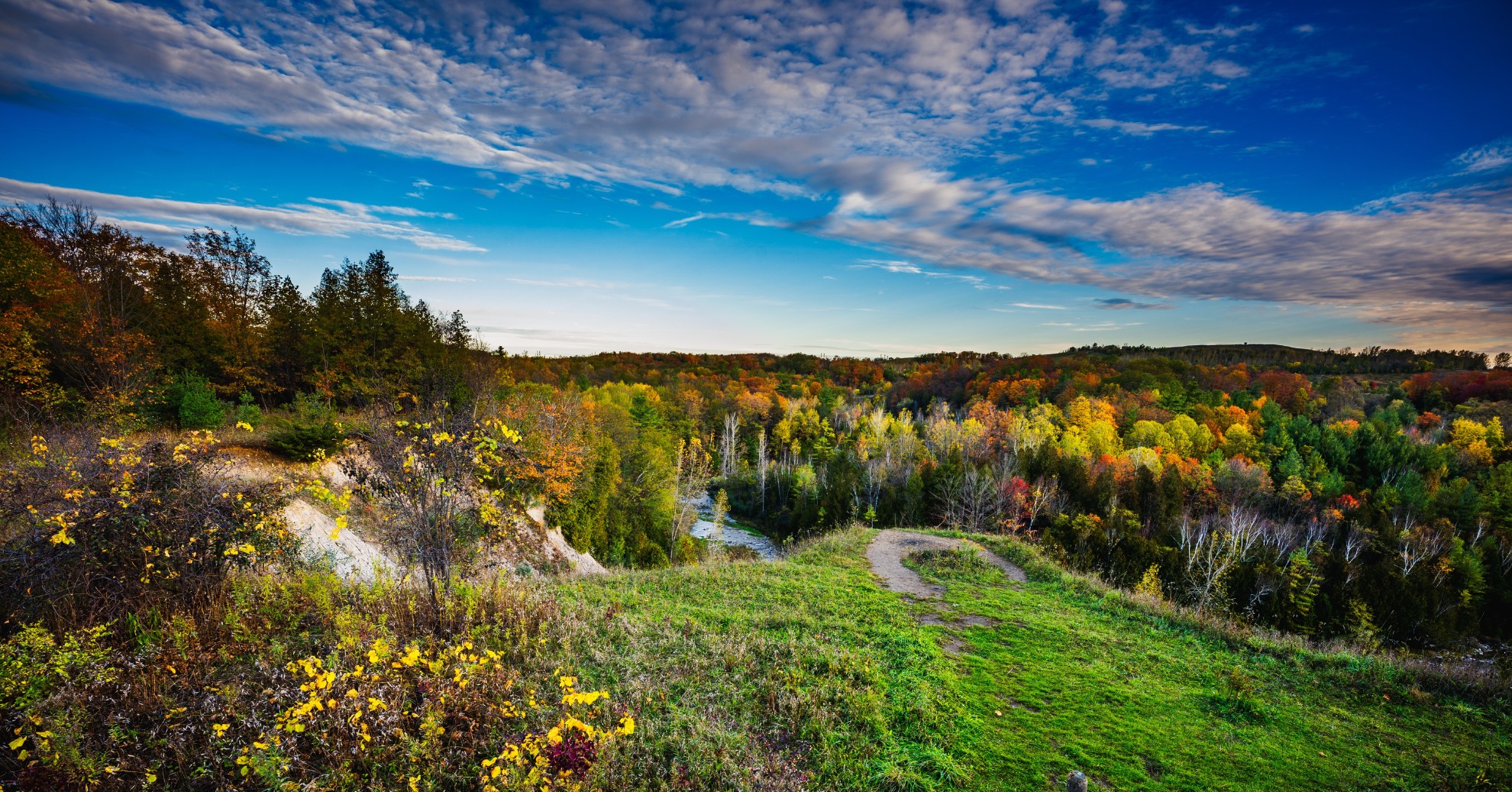Yes to More National Urban Parks in Our Backyards!
National Urban Parks (NUPs) are a great way for Canadians to experience the outdoors in their own neighbourhood while also keeping our cities cool and making them more resilient to climate change. They have additional benefits like providing habitat for migratory birds and act as important sponges for major rain events.
The National Urban Parks are great because they:
- Conserve nature by protecting vital ecosystems and biodiversity within urban settings.
- Connect people with nature by providing the physical and mental benefits of camping, hiking, and other nature appreciation activities close to home.
- Advance reconciliation with Indigenous peoples by integrating Indigenous knowledge and values into the management and use of these lands.
Could you benefit from more nearby nature?
Canada’s Commitment
Following the establishment of Canada’s first National Urban Park along the Rouge River in Toronto, Parks Canada and mayors from across Canada joined together in 2021 to celebrate nature in the city by committing $130 million to a National Urban Park strategy. Six new sites were identified at that time to be established as National Urban Parks: Edmonton, Halifax, Saskatoon, Victoria, Windsor, and Winnipeg.
In order to make nature more accessible to the 30 million Canadians who live in urban areas, the goal is to establish those six parks by 2025 and to reach 15 by 2030. Since the announcement, several parks have moved along the path to establishment, but there’s still lots of work to be done to achieve this objective. Developing 15 sites will require funding for Parks Canada to develop innovative solutions with everyone who needs to be involved. From naturalists, to city planners, to Indigenous rights-holders, to businesses, it takes a lot of local legwork to establish and manage a National Urban Park.
That’s why Nature Canada is calling for more resources to support the National Urban Parks strategy and working through our Nature Network partners to get the right voices around the planning tables.
Hands up if you want Canada’s next National Urban Park in a city near you!
From Promises to Parks: Challenges in establishing new National Urban Parks
Establishing a new national park, including those in urban areas, generally has four steps:
- Pre-feasibility
- Planning
- Designation
- Implementation
You can learn more about the process here.
Each of these steps require time to ensure that strong relationships are built with partners and that the public is consulted along the way. And urban parks involve more partners, more members of the public, and more complex issues over land use.
Differing perspectives on priorities, boundaries, and development can sometimes be a source of tension on these lands. But Canadians value nature as part of our identity and are committed to balancing the needs of our urban landscapes and the competing pressures of business, industry, and housing without sacrificing nature. National Urban Parks are one way that communities can start to imagine how they can play a role in protecting and restoring Canada’s natural landscapes.
Funding this program is critical. While the initial funding of $130M demonstrated the government’s commitment to this work, National Urban Parks are complex, and negotiations are expected to take time since the partnership model is new for many of the groups involved. Several parks are close to being done, but need additional funds to complete the feasibility or planning stages. Additionally, with rising inflation, costs for operating a park have increased significantly and the original money is no longer enough for what went from an ambitious goal of six NUPs by 2025 to 15 NUP by 2030.
For the National Urban Park strategy to truly thrive, it will need robust funding to fuel the collaborative planning processes that will drive success!
Evidence of Success

Rouge National Urban Park
Canada’s first National Urban Park was established in 2019. Rouge NUP is located in Canada’s largest city and provides the only urban campground in Toronto. Rouge Park was originally established as a partnership between the province of Ontario and the municipalities of Toronto, Pickering, and Markham in 1995, and Parks Canada became interested in growing the park area in 2011. Over the next 8 years, more land was acquired and the park grew to just over 40km2 or 4000 hectares. The Rouge National Urban Park First Nations Advisory Circle includes 10 local First Nations who have been involved in the establishment and operations of the park. Together with Parks Canada, they’ve embarked on projects to restore landscapes, explore the archeological history of the site, and plan visitor experience initiatives. Finally, Rouge is home to over 1700 species, including 42 species at risk including Monarch Butterflies, Blanding’s Turtles, and Chimney Swifts.
In Progress…
Ojibway National Urban Park
In 2021, Parks Canada embarked on the pathway to establishing a new National Urban Park in Windsor, Ontario. Ojibway National Urban Park was set up in partnership with Caldwell First Nation, Walpole Island First Nation, City of Windsor, Town of LaSalle, Parks Canada, Province of Ontario, and Hydro One to protect some of the most threatened ecosystems in Canada including rare Carolinian Zone Tallgrass Prairie and Black Oak Savannah. In 2024, additional funding to establish and operate Ojibway NUP was announced. Groups like Friends of Ojibway Prairie provide important educational opportunities to raise public awareness and get local communities excited about National Urban Parks.
Halifax National Urban Park
One of the National Urban Parks that is coming soon is within the Blue Mountain-Birch Cove Lakes Wilderness Area in Halifax. In 2022, a partnership group was formed with Parks Canada, Halifax Regional Municipality, Kwilmu’kw Maw-klusuaqn (a Mi’kmaq rights organization), Nova Scotia Nature Trust, Province of Nova Scotia, and Sipekne’katik First Nation.
Together, this group has advanced the proposed site of over 2,000 hectares to the planning phase. Mi’kmaw partners have been an important part of the co-development of the engagement approach with Parks Canada. Beyond providing biodiversity protection and opportunities for people to enjoy nature, the Halifax National Urban Park will also be a place for conversations around the rights and interests of the Mi’kmaq in Nova Scotia.
Add your name to show your support for National Urban Parks and other urban nature protection initiatives.
Yes, in my backyard! Let’s get a National Urban Park for all Canada’s cities!



